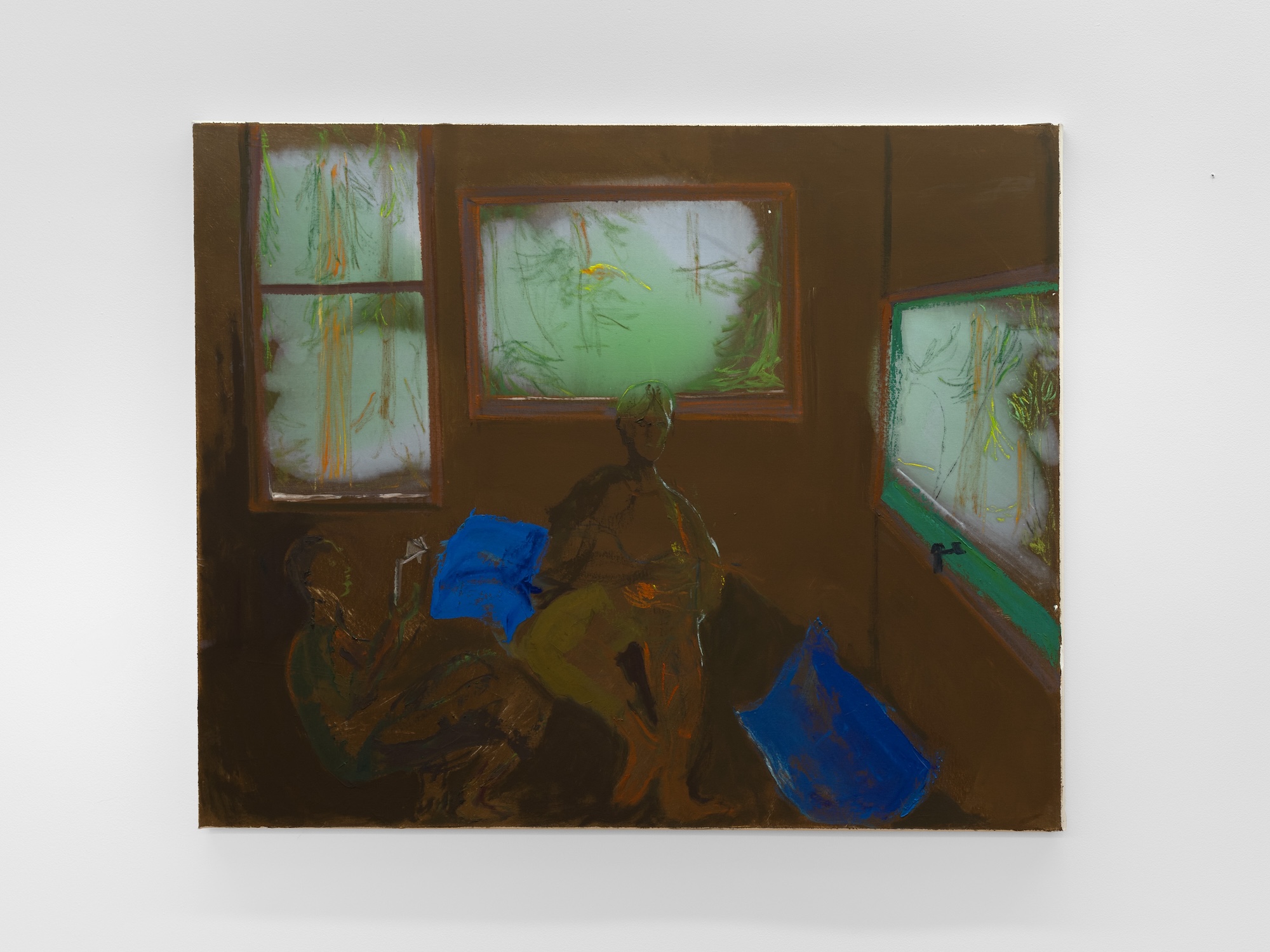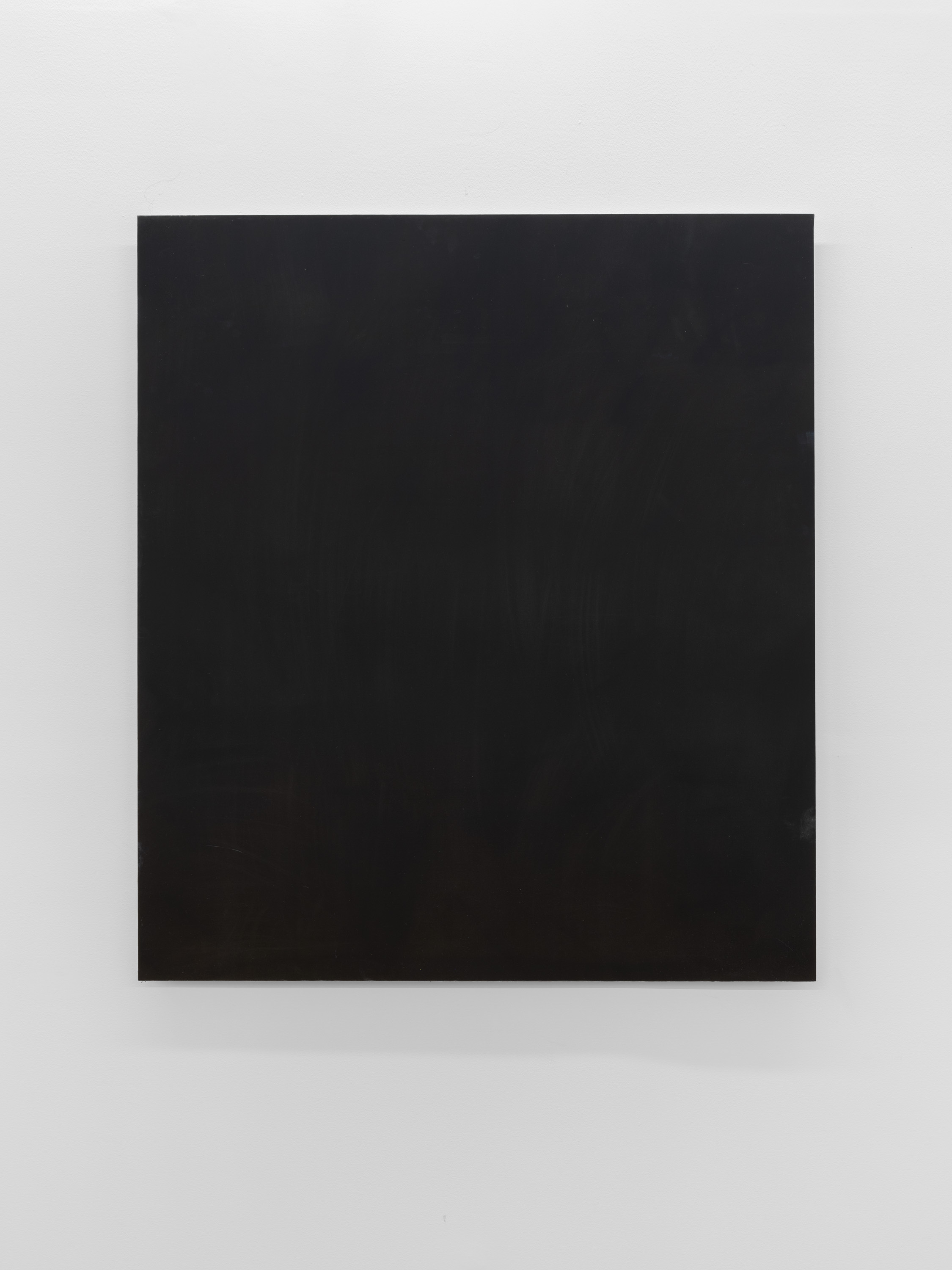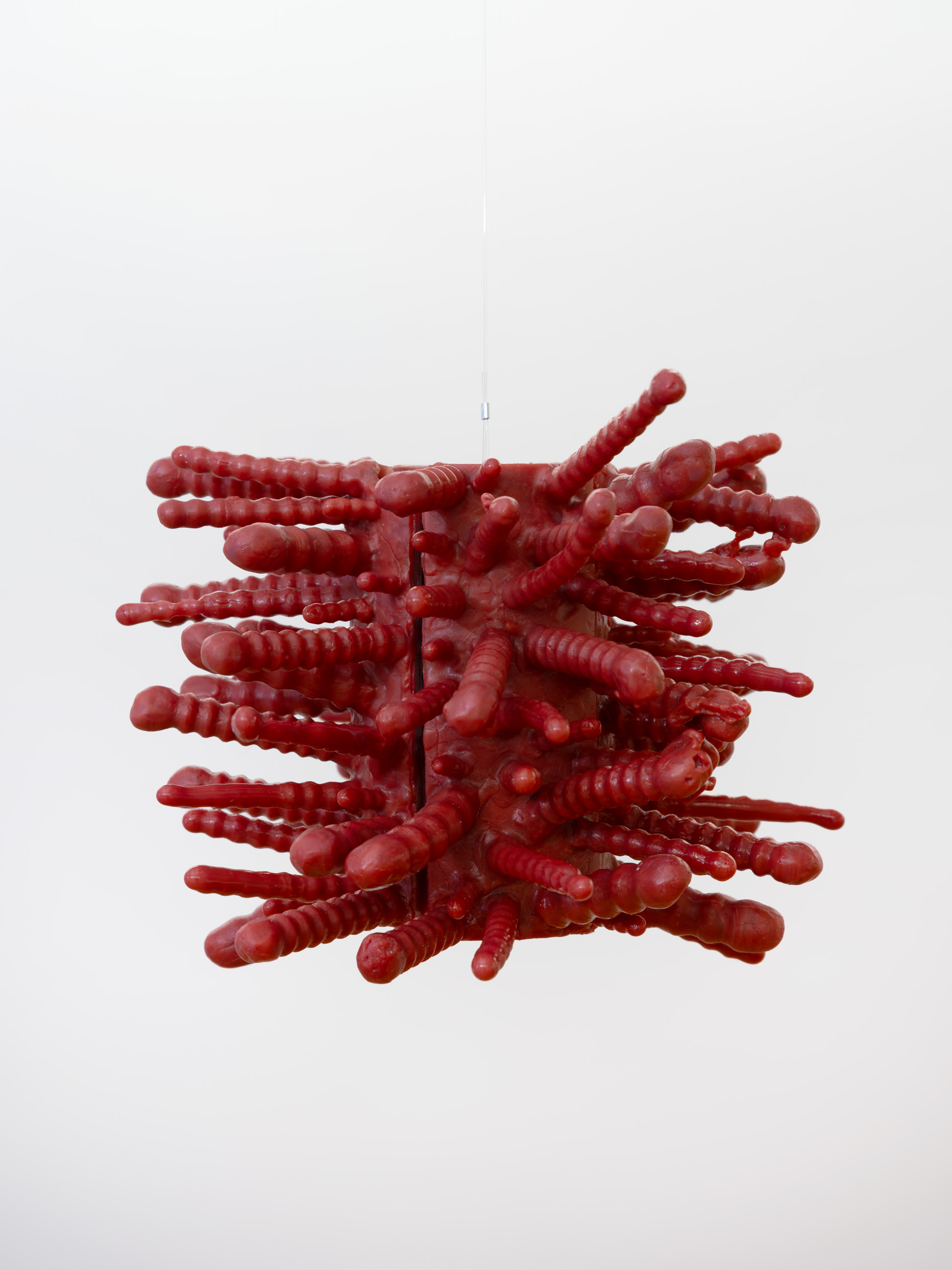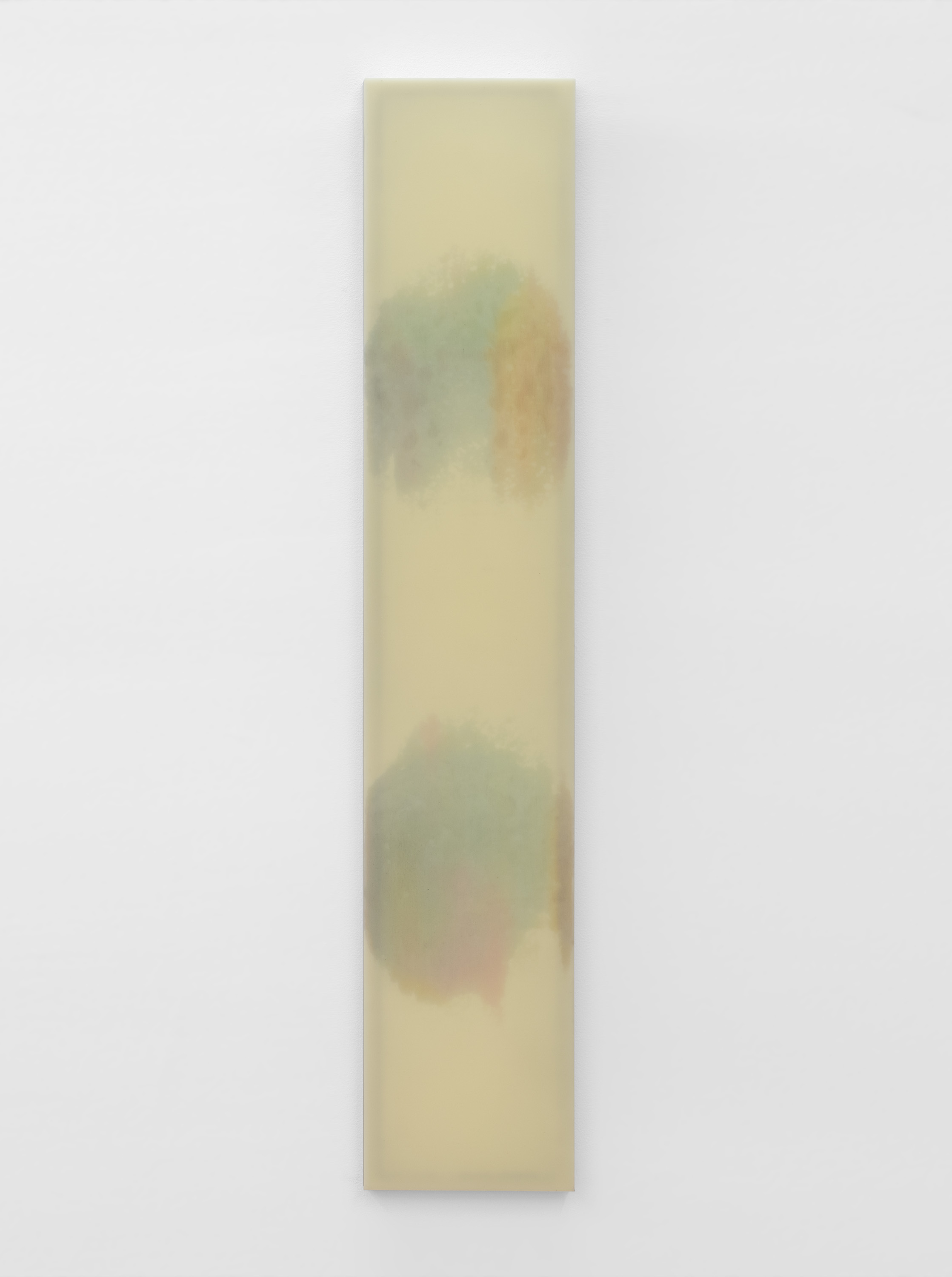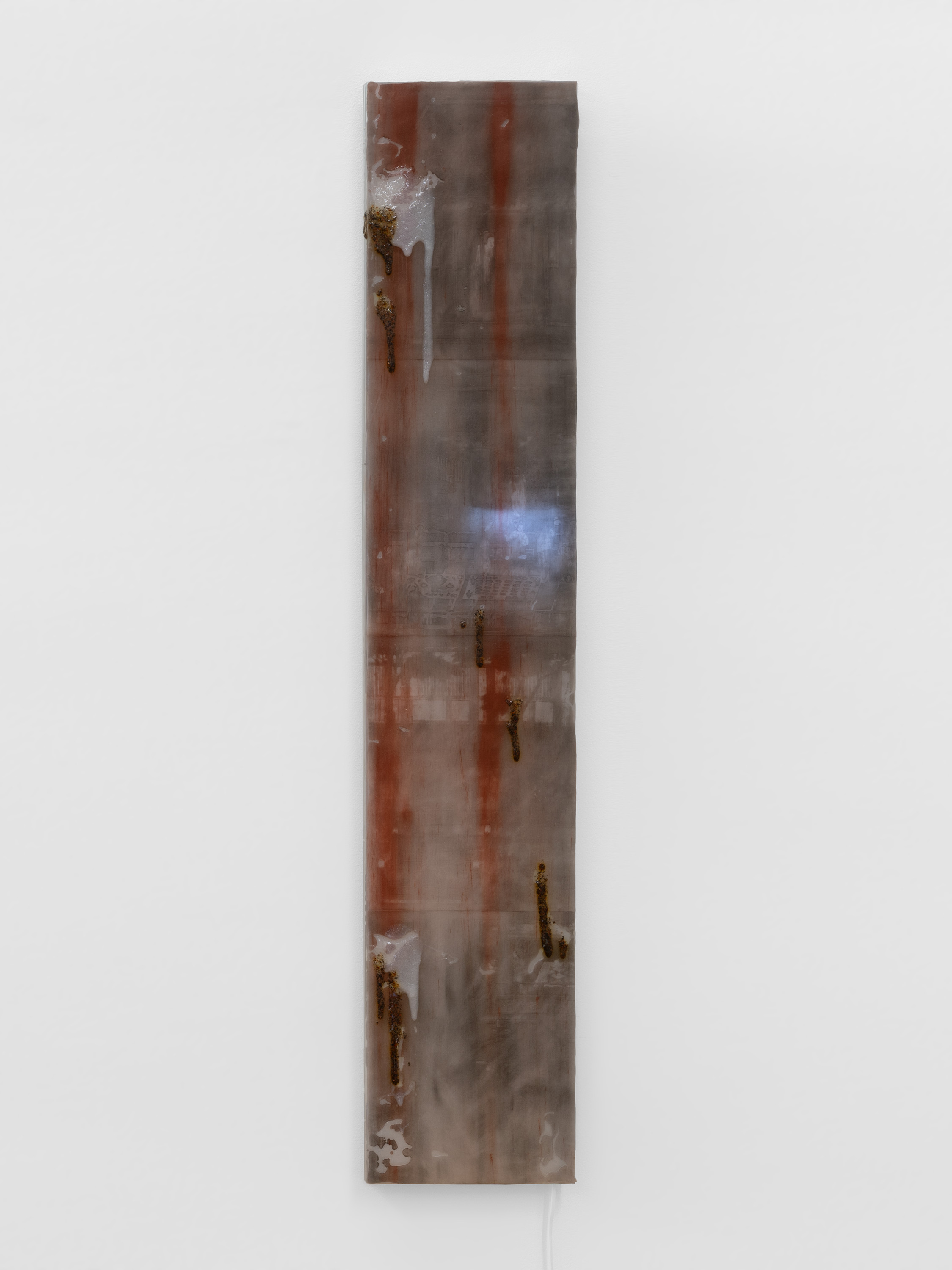RAINRAIN is pleased to announce the group exhibition What Do Angels Look Like?, running from November 30, 2023 to February 3, 2024 with works by Henry Chapman, Judy Chung, Craig Jun Li, David Moy, Martha Poggioli, Jake Reed, and Emma Safir. With a title that poses a question about the discrepancy between widespread visual representations and biblical records of a theistic being, the show engages with the ways in which artists unmask the potentiality for alternative interpretations and definitions of commonly accepted perceptions.
The myth around angels’ true figures has become both a scriptural exposition and an internet meme. While angels are mostly depicted in a sacred, serene manner in art historical paradigms, beyond this context, a diverse spectrum emerges, presenting the possibility of distinctive and sometimes contrasting forms or descriptions. Time and again, concepts and ideas are reinforced, dissipated, or otherwise misconstrued. But what remains is the tension between the assumed truth and a budding desire to challenge it. What Do Angels Look Like? brings together artworks that gauge, tease and subvert societally calibrated and historically canonized notions, which rarely receive reassessment or revision but very much deserve such.
Some artists in this exhibition explore this intermediate zone, which they can trawl for purportedly harmless and neutral motifs or ideas, reverse their original perceptions, and expose their unspoken risks. Martha Poggioli’s hanging sculpture made with lost wax casting methods on kiln-cast glass is a metaphorical combination of surgical tools and villi-like anatomical structures in human bodies. Its semi-organic/industrial look reveals the machine-like characteristics of human organisms and the inaccessibility of internal physical features despite scientific studies. Judy Chung navigates the intricate dance between elusive digital processes and tangible traditional mark-making. Inhabited by characters and archetypes inspired by subculture, literature, and design, her world emerges in a translucent space, crafted with a neon palette that forms multiple layers interacting with the canvas's white background. By painting with the most succinct and universal marks and figures, Henry Chapman creates an ideal visual realm where postures and movements become denuded of lexical meanings and thus freed from any contextual limit.
Other artists postulate a hypothetical situation where the innocuous status quo does not promise a happily-ever-after as it seems. By using the ideas of text redundancy and decontextualization, David Moy laments the futile information overload as well as the over/de-sensationalization of tragic news we are experiencing in the contemporary digital age. The recurring motifs in Emma Safir's textile works, such as embroidered smocking and cotton yo-yos, once again play significant roles in her latest sculptural pieces of pewter frames. These works draw inspiration from the visual and structural aesthetics of a girandole, allowing the masculine texture of pewter to engage in a dialogue with the soft yet reflective threads, which shape into a web at its center. Safir leverages the contrasting nature of the materials to revisit and interrogate historically gendered forms of labor. Craig Jun Li's five vertical "vitrines" – using synthesized materials – recast digital data of displaced objects from museum collections. This poses a poignant analogy to the prevalent way of viewing digitized high-resolution images on museum websites — an act that depletes the purpose of displaying material objects. This work problematizes the very nature of archiving systems, emphasizing the enduring discrepancy between our perceptions and experiences. Set against the backdrop of global climate change, Jake Reed revisits the natural motifs that span design epochs. He creates unfamiliar yet traceable architectural forms and objects, questioning how our past fondness and appropriation of nature can align with the current ravaging exploitation and exhaustion of natural resources.
Framing the inconsistencies found in knowledge-learning and unlearning, the perceived and the experienced, What Do Angels Look Like? is much less about being skeptical than about being unflinching, as we are about to step into more crevasses that crack open long-held certainties.
